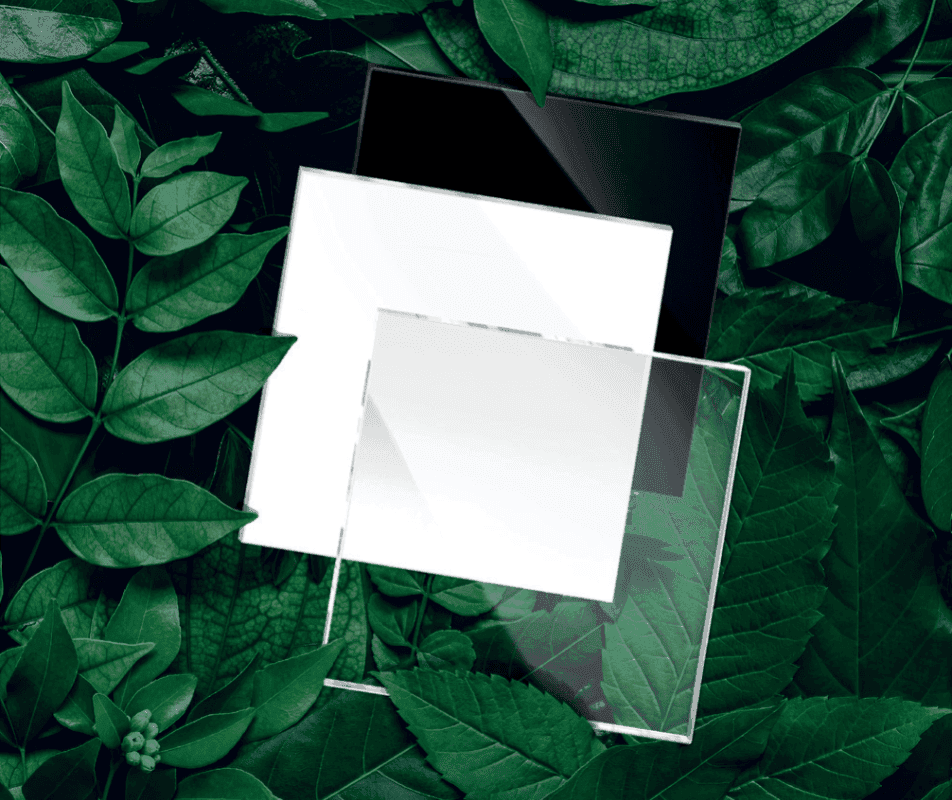Environmental consciousness continues to gain momentum regarding sustainable manufacturing. The shift towards eco-conscious practices calls for innovative solutions in acrylic production.
This article looks into the evolution of sustainable acrylic sheet production. It uncovers groundbreaking methods to reduce ecological impact while maintaining durability and aesthetic appeal.
Environmental Issues with Traditional Acrylic
Conventional acrylics are well-known for superior durability and impressive versatility. But it comes at a significant environmental cost upon production.
01. High Energy Consumption in Manufacturing
The process is highly energy-intensive with complex polymerization, extrusion, and casting. Such methods require large amounts of electricity and fossil fuels. The raw acrylic monomers lead to a substantial carbon footprint.
Polymethyl methacrylate (PMMA) manufacturing involves high-temperature reactions and purification. Cast acrylic sheets demand continuous heating and cooling cycles. Extrusion involves melting/reshaping PMMA granules under extreme heat.
The global PMMA market was valued at $4.5 billion in 2023. And the production generated millions of metric tons of CO₂ annually. Hot bending doesn’t work with less energy, initiating harmful effects even with the recycled types.
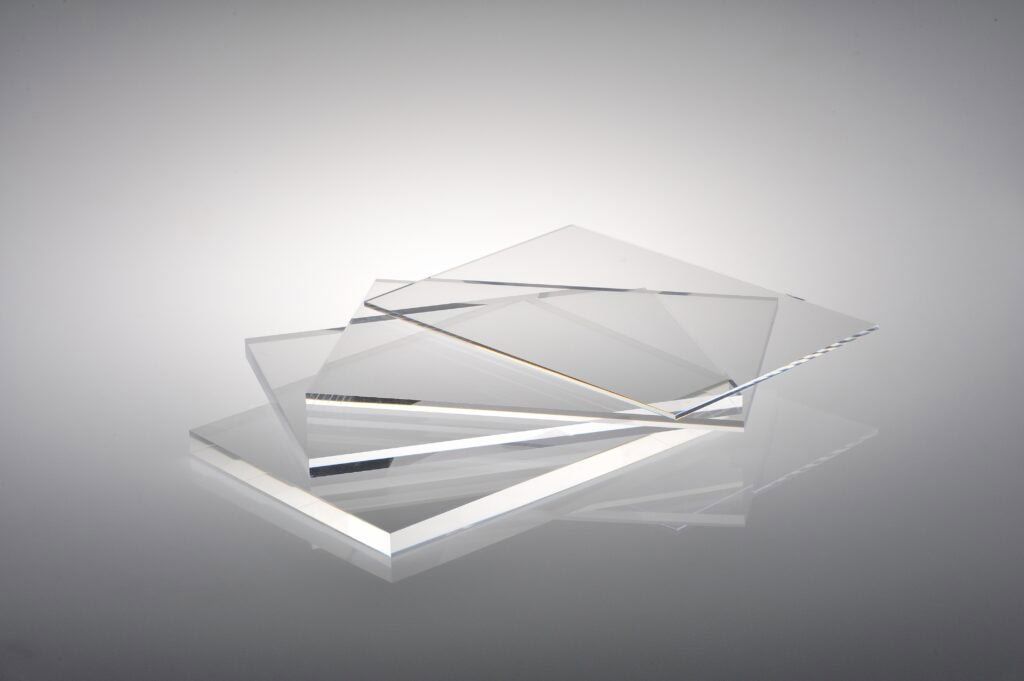
02. Raw Materials and Resource Depletion
Acrylic sheet production relies on petroleum-based derivatives, primarily methyl methacrylate (MMA). It’s extracted from crude oil and natural gas. The excessive dependence accelerates environmental degradation and resource depletion.
PMMA is derived from fossil fuel sources, making acrylic production inherently non-renewable. Extraction processes involve heavy industrial operations, leading to land degradation, ecosystem disruption, and biodiversity loss.
Reports indicate that petroleum reserves could decline by 35% by 2050 with the current extraction rate. The acrylic industry’s reliance on fossil fuels has prompted legislative discussions in the US on imposing stricter raw material sourcing regulations.
03. Waste Generation Like Plastic Sheets
Traditional acrylic production generates significant amounts of waste. Defective sheets, offcuts, and production scraps often end up in landfills due to limited recycling options.
The casting process produces around 15-30% material loss due to trimming and imperfections. Solid acrylic waste is seldom biodegradable, contributing to environmental concerns.
Acrylic scraps are hard to recycle, leading to incineration or landfill disposal. Incineration releases harmful pollutants like carbon monoxide and dioxins, which degrade air quality.
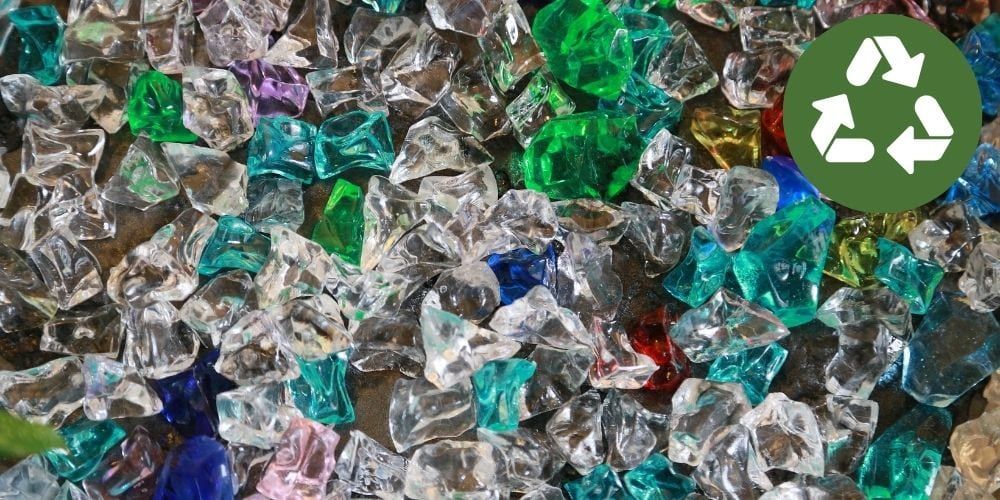
04. Pollution and Harmful Emissions
Traditional acrylic sheet production releases hazardous pollutants into the air and water. It directly impacts local ecosystems while contributing to climate change.
The polymerization of methyl methacrylate releases volatile organic compounds (VOCs) to form smog. Industrial emissions (toxic fumes) include CO₂, sulphur dioxide, and nitrogen oxides, which harm air quality.
Acrylic production plants discharge chemical residues into water to affect aquatic life. Toxic solvents in processing can leach into groundwater, making water unsafe.
Sustainable Acrylic Sheet Production
Global industries shift toward eco-conscious practices. Sustainable acrylic sheet production has also emerged in materials manufacturing.
A. Utilizing Renewable Raw Materials
Scientists are developing acrylic from plant-derived sources. Sugarcane, corn, and cellulose-based compounds lead the way. Bio-based acrylics hold similar physical properties to petroleum-based variants (weather resistance against UV radiation).
Bio-acrylic production cuts emissions by up to 60% to conventional petroleum-based methods. The Mitsubishi Chemical Corporation has pioneered bio-based PMMA. It uses renewable isobutanol derived from sugarcane for high-quality acrylic sheets.
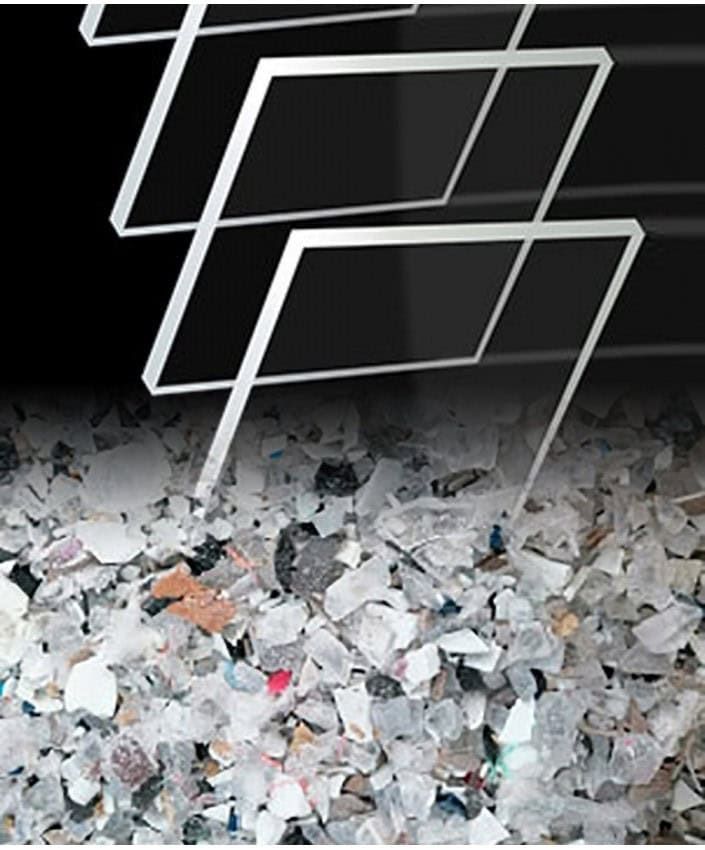
B. Energy-Efficient Manufacturing
Sustainable acrylic sheet production focuses on minimizing energy consumption. It does so by adopting renewable energy sources and energy-efficient technologies to power manufacturing facilities.
Leading manufacturers are switching to solar, wind, and hydroelectric power for production plants. In regions with ample sunlight, solar-powered systems have proven effective. Wind farms contribute to clean energy supply chains.
Modern low-energy curing ovens can reduce energy waste by up to 40%. German Evonik Industries, a major PMMA producer, has implemented solar-powered manufacturing facilities and heat recovery.
C. Waste Reduction and Circular Economy
Advanced CAD modeling and AI-driven material analysis reduce production errors and waste. Many factories use laser-based cutting techniques to minimize offcuts and ensure efficient material usage.
Advancements in PMMA recycling allow old sheets to be chemically broken into reusable monomers. Closed-loop systems ensure that manufacturing scraps are reintroduced into the production cycle.
Mechanical recycling recovers acrylic waste while maintaining quality. Swedish researchers developed solvent-based PMMA recycling, capable of recovering 95% of acrylic waste to reduce landfill concerns.
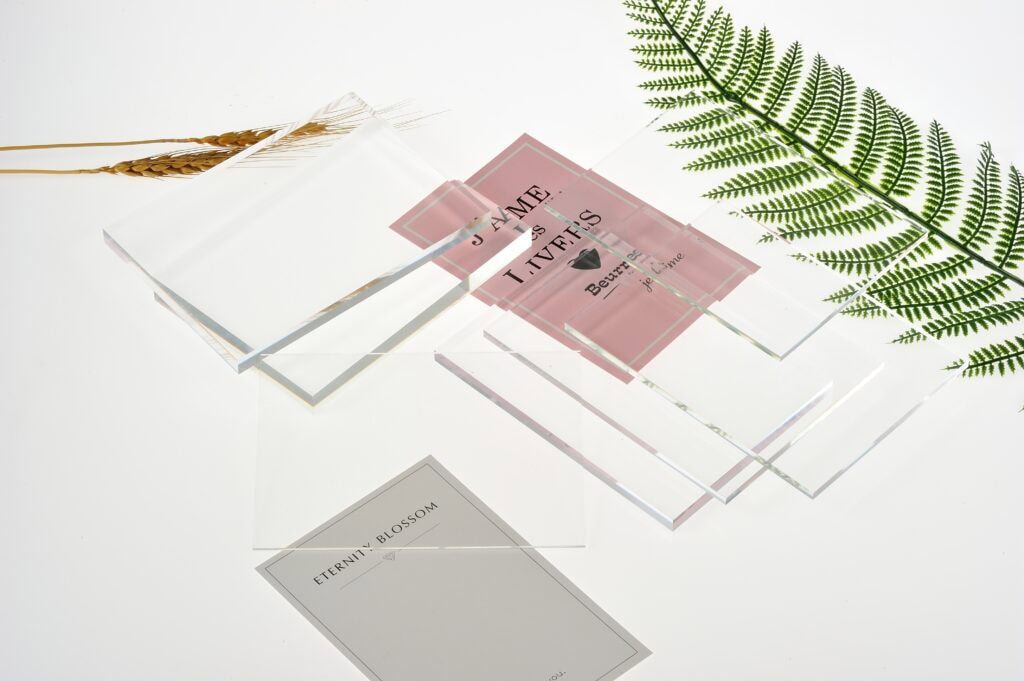
D. Sustainable Packaging Solutions
The packaging of modern acrylic sheets is heavily overlooked. Transitioning to eco-friendly materials can significantly enhance sustainability. Manufacturers replace traditional plastic packs with biodegradable wraps and cardboard-based alternatives.
Water-soluble and compostable films reduce non-recyclable plastic waste. Paper-based protective covers keep the sheets scratch-resistant during transport. Corrugated cardboard crates replace plastic foam inserts, enhancing recyclability.
Plant-based resins used in sustainable packaging materials significantly lower carbon emissions. European acrylic manufacturers use biodegradable starch-based films for recyclability and composting, helping industries enable zero waste logistics.
Innovations in Sustainable Acrylic Production
Sustainable acrylic production is mostly driven by green chemistry, carbon footprint reduction, closed-loop recycling, and bio-acrylic alternatives. Such innovations reduce environmental impact without sacrificing the desired acrylic properties.
I. Green Chemistry in Acrylic Manufacturing
Green chemistry makes acrylic production sustainable by reducing toxic substances. It also minimizes waste while improving energy efficiency. Researchers have developed water-based solvents to replace petroleum-derived chemicals.
Bio-based catalysts derived from plant sources eliminate the need for heavy-metal-based initiators. Low-impact polymerizable bonding reduces toxic byproducts, minimizing environmental hazards.
A research initiative at MIT successfully developed an alternative PMMA synthesis process. It uses bio-based monomers and low-impact catalysts. The resultant method reduces waste by over 40% compared to traditional manufacturing.
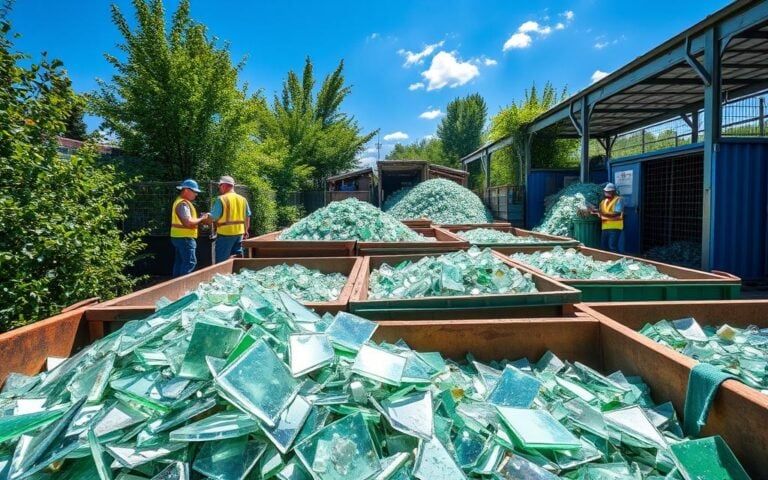
II. Closed-Loop Recycling Systems for Acrylic
Closed-loop recycling ensures acrylic can be collected, processed, and remanufactured into high-quality sheets. Acrylic scraps are ground down and re-extruded into new sheets in mechanical recycling. Thus, it maintains clarity and strength.
PMMA is broken down into its original monomers, purified, and reused in chemical recycling. It creates fresh acrylic sheets with properties identical to standard virgin synthetic acrylics.
Europe’s Perspex International launched a closed-loop acrylic recycling initiative. It collects industrial PMMA scraps and processes them into high-quality recycled acrylic sheets. And the total waste gets reduced by over 75% annually.
III. Carbon Footprint Reduction
Acrylic manufacturing generates a high carbon footprint. Recent innovations aim to lower emissions through carbon-neutral energy sources. Manufacturers are integrating solar, wind, and hydropower into production facilities.
Low-temperature polymerization methods cut energy consumption by 30-50%. Smart automation systems in acrylic factories optimize production speed and material efficiency, reducing energy waste.
Carbon capture tech is being tested to absorb production emissions. German acrylic manufacturers implemented solar-powered production to achieve a 45% reduction in carbon emissions per ton of PMMA produced.
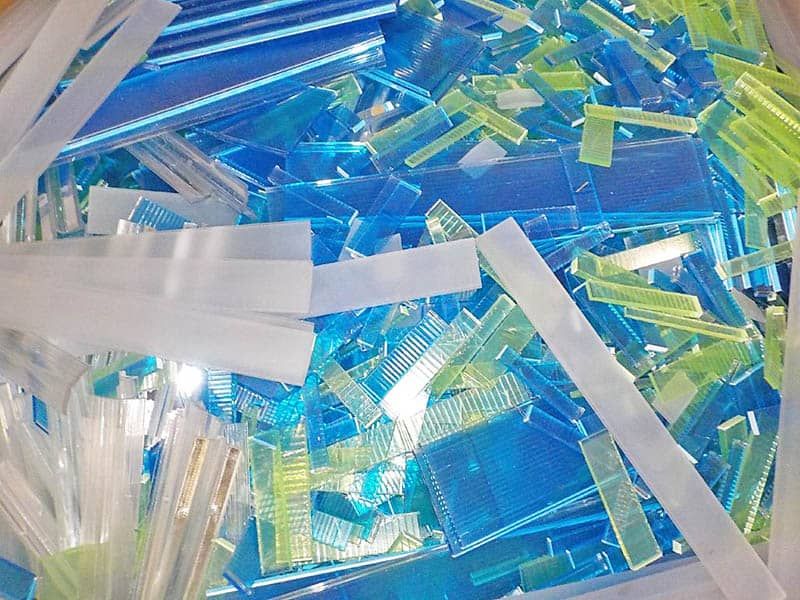
Benefits of Sustainable Acrylic Sheet Production
Sustainable acrylic sheet production represents a great step toward reduced environmental damage. Businesses adopt sustainable practices to gain competitive benefits while contributing to global trends.
a. Environmental Impact
Even the least recycled types from re-design or re-use optimize ecological products as glass alternatives. The manufactured acrylic for home decor or CNC router uses solar, wind, and hydroelectric energy.
Thus, it reduces carbon footprints by up to 45% in optimized production facilities. Eco-friendly catalysts and solvents lower emissions, making production safer for both workers and the environment.
Closed-loop recycling systems can reclaim acrylic scraps and reprocess them into new high-quality sheets. Advances in biodegradable alternatives shift the acrylic industry toward non-toxic materials.
b. Economic Advantages
Sustainable acrylic production helps the environment, that’s been proven to be economically advantageous. Its ability to reduce operational costs has led to improved financial returns across Latin America over time.
Factories using low-energy curing ovens and efficient automation report up to 40% energy savings. Heat recovery systems repurpose excess heat, further optimizing energy use and lowering expenses.
Many recycling companies minimize raw material (virgin acrylic) wastage. Recycled-content sheets offer an alternative to virgin PMMA, lowering material purchasing costs.
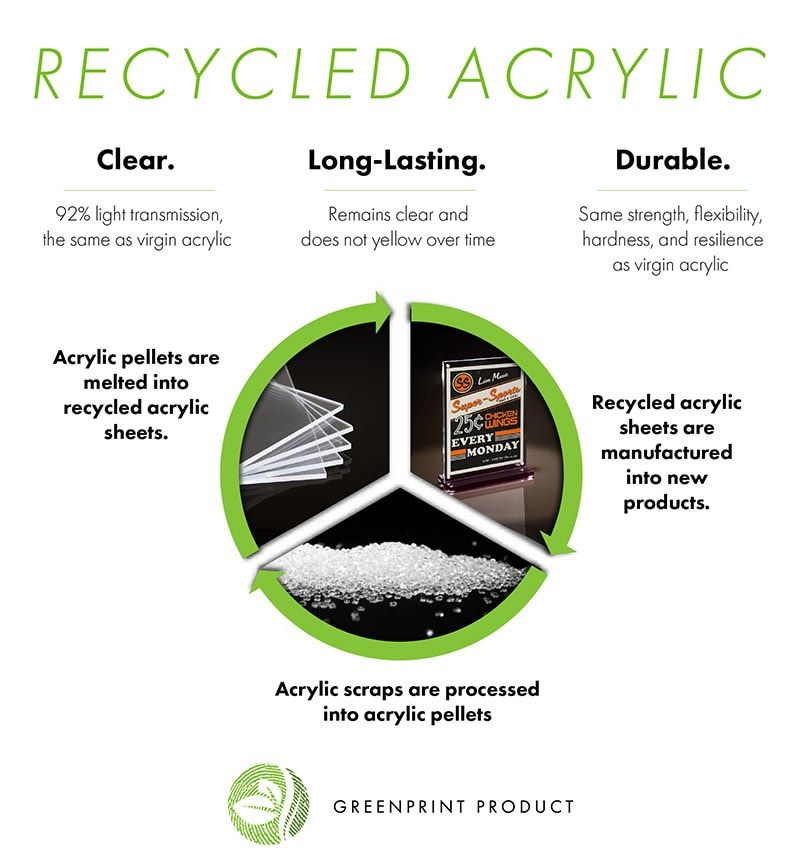
c. Enhanced Brand Reputation
Consumers are increasingly seeking eco-conscious brands, making sustainability a key market factor. Sustainable acrylic production strengthens brand image, builds trust, and attracts aware customers.
Studies show that 76% of consumers are willing to pay more for eco-friendly products. Businesses prioritizing green materials build long-term customer loyalty and credibility.
Carbon-neutral acrylic aligns with global sustainability goals regarding corporate social responsibility (CSR). Leading architecture, interior design, and advertising firms now require sustainable materials.
d. Long-Term Industry Growth
The demand for sustainable materials is growing rapidly. It creates new opportunities for research, technological advancements, and industry expansion. The global eco-friendly plastic sheets market is expected to reach $78 billion by 2030.
Government regulations favor low-impact production, further pushing toward sustainable solutions. Research into bio-based acrylic monomers continues to introduce new uses for sustainable PMMA. Hybrid composite acrylic sheets integrate natural fiber reinforcements.
It enhances durability and sustainability. European companies are investing in next-generation bio-acrylic technology. It forecasts a 55% increase in demand for eco-friendly acrylic across architectural and commercial outdoor applications by 2027.
Real-World Examples of Sustainable Acrylic Sheet Production
Case Study: Recycled Acrylic Products – Perspex International
Green acrylic solutions focus on renewable feedstocks. Perspex International, a leading UK-based manufacturer, has embraced 100% recycled cast acrylic production. Its recycling process –
Mechanical Recycling: Perspex collects acrylic waste and reprocesses it into high-quality sheets, retaining durability and optical clarity.
Chemical Recycling: The company has developed processes to chemically break down PMMA waste into reusable monomers, ensuring infinite recyclability.
Waste Optimization: Perspex implements advanced laser-cutting technology to reduce production offcuts, minimizing material loss.
75% reduction in acrylic waste disposal across its manufacturing plants. The recycled-content acrylic sheets offer a lower carbon footprint, cutting emissions by up to 50% compared to virgin PMMA.
Case Study: Carbon-Neutral Acrylic Producers – Röhm GmbH
Achieving carbon-neutral acrylic production is challenging. Röhm GmbH, a German manufacturer, has pioneered zero-carbon PMMA production with renewable energy sources. Carbon-neutral strategies –
Solar-Powered Facilities: Röhm has transitioned to solar and wind energy, eliminating fossil fuel dependency.
Carbon Capture Technology: The company has invested in CO₂ capture systems, absorbing emissions from production and preventing them from entering the atmosphere.
Efficient Polymerization Processes: Low-temperature curing and automation ensure 30% lower energy consumption.
Röhm has achieved a 45% reduction in CO₂ emissions from acrylic production. The company’s carbon offset initiatives support global sustainability projects, such as reforestation programs.
Challenges in Implementing Sustainable Acrylic Production
Sustainable acrylic production holds immense potential for reducing environmental impact. But its widespread implementation is associated with several challenges.
01. Cost Implications
Adopting sustainable measures means dealing with a high upfront investment to integrate eco-conscious techs and materials. Manufacturers must evaluate the long-term return on investment within their financial capability.
Converting acrylic plants to energy-efficient equipment (solar-powered systems, low-energy curing ovens, heat recovery units) requires significant initial funding. Developing bio-acrylic alternatives demands extensive research and development.
Many manufacturers hesitate to adopt sustainability measures due to uncertainty in cost savings. Eco-friendly acrylic sheets often have higher production costs, making them less competitive against cheaper conventional alternatives.

02. Technological Limitations
The current sustainable acrylic technology presents scientific and engineering challenges to hinder mass-scale adoption. Innovations are needed to enhance material recyclability, energy efficiency, and waste reduction methods.
PMMA is notoriously difficult to recycle, primarily due to its complicated chemical structure. Mechanical recycling can lead to degraded material quality, making it unsuitable for applications like outdoor signs. Chemical recycling is still in early development stages, with high energy input.
Acrylic polymerization demands high-temperature processes. It makes energy savings difficult without advanced equipment. Even with heat recovery systems, the efficiency varies depending on factory setup and technical capabilities.
03. Market Acceptance
Despite growing awareness about sustainability, eco-friendly acrylic sheets often face resistance in the market. There are circulating misconceptions about cost, quality, and performance.
Such acrylics cost more due to renewable feedstocks and advanced recycling. Many buyers still prioritize cost savings over environmental product declaration, looking into many plastics (other materials).
Some question whether recycled or bio-based acrylic offers the same clarity, durability, and resistance. Eco-friendly acrylic can withstand harsh weather conditions to match the quality.
Future of Sustainable Acrylic Sheet Production
Advancements in material science, global policy shifts, and strategic collaborations are driving eco-friendly manufacturing. There are some emerging trends, the role of regulations, and collaborative efforts to shape the future of acrylic sustainability.
A. Emerging Trends
Advancements in eco-friendly materials and production technologies allow more sustainable solutions. Manufacturers are developing innovative production methods to reduce waste, energy consumption, and carbon footprints.
Govts worldwide are imposing stricter regulations on polymer and plastic production. It encourages manufacturers to shift to sustainable practices. Carbon-neutral production initiatives are influencing corporate policies.
It continues to push industries toward a reversible ecogreen process and zero-emission manufacturing. Circular economy models promote an infinitely recyclable closed-loop to keep acrylic waste repurposed rather than discarded.
B. Role of Policy and Regulation
Global environmental policies are shaping the acrylic industry’s approach to sustainability. It ensures regulatory compliance and improved environmental responsibility. Key govt regulations to encourage sustainable acrylic production –
EU Green Deal Plastics Strategy: Requires acrylic manufacturers to develop sustainable materials and improve recyclability by 2025.
US Federal Sustainability Plan: Mandates federal agencies to prioritize eco-friendly materials, including recycled-content acrylic, in procurement and infrastructure projects.
China’s Plastic Waste Management Guidelines: Focus on reducing reliance on virgin polymers while promoting closed-loop recycling systems for PMMA.
Compliance with recycling quotas and carbon neutrality policies is necessary to maintain market competition. Govt-backed financial incentives (tax credits for sustainable production) push investment in eco-friendly materials and energy-efficient manufacturing.

C. Collaborations for a Sustainable Future
Industry collaborations between manufacturers, researchers, and environmental organizations are accelerating sustainable acrylic innovation. Some strategic partnerships to drive sustenance –
Manufacturers and Universities: Research partnerships foster next-generation bio-acrylic and energy-efficient polymerization methods.
Corporate and Environmental Initiatives: Global organizations like the Green Chemistry Alliance collaborate with acrylic producers to reduce toxic byproducts and improve sustainability standards.
Multi-Industry Material Recycling Networks: Companies in architecture, automotive, and advertising are sharing recycled PMMA supply chains.
Funding for R&D supports the commercialization of low-impact acrylic manufacturing technologies. Shared sustainability frameworks ensure consistency across global acrylic markets, driving uniform adoption of green practices.
Frequently Asked Questions (FAQs)
1. What makes acrylic sheet production unsustainable in traditional manufacturing?
Traditional acrylic relies on petroleum-based raw materials. It consumes large amounts of energy and generates high emissions during de polymerization process. Additionally, the waste is rarely recycled. It leads to environmental degradation and increased plastic pollution.
2. Are sustainable acrylic sheets as durable and high-performing as conventional ones?
Yes. Innovations in bio-based acrylic and recycled acrylic have shown similar mechanical properties. Testing indicates that high-quality recycled acrylic sheets match the performance of virgin materials.
3. What are the most effective ways to reduce waste in acrylic sheet production?
Closed-loop recycling systems allow acrylic scraps to be reprocessed into new sheets. Precision manufacturing techniques, such as laser cutting, minimize offcuts. Recyclable acrylic formulations ensure that discarded materials can be repurposed, reducing landfill waste.
4. What are the latest advancements in biodegradable acrylic materials?
Scientists are researching biodegradable PMMA, including bio-derived thermoplastics. Experimental bioplastics, such as PHA (polyhydroxyalkanoates), show promise for eco-friendly acrylic alternatives.
5. Can acrylic be made entirely from recycled materials without compromising performance?
Yes. Chemical recycling technologies enable PMMA to be broken down into its original monomers. It lets manufacturers produce new acrylic sheets with identical strength and clarity.
6. How do environmental certifications influence sustainable acrylic production?
Certifications such as ISO 14001 (Environmental Management), EU Ecolabel, and LEED (Leadership in Energy and Environmental Design) validate that manufacturers adhere to sustainable practices. It boosts consumer confidence and ensures compliance with global environmental standards.
7. What are the global regulations surrounding the use of recycled acrylic in manufacturing?
The European Union’s Green Deal mandates minimum recycled content. Similarly, US Federal Sustainability Policies encourage businesses to incorporate recycled acrylic from post-consumer waste. China has also restricted landfill disposal of acrylic waste, promoting recycling initiatives.
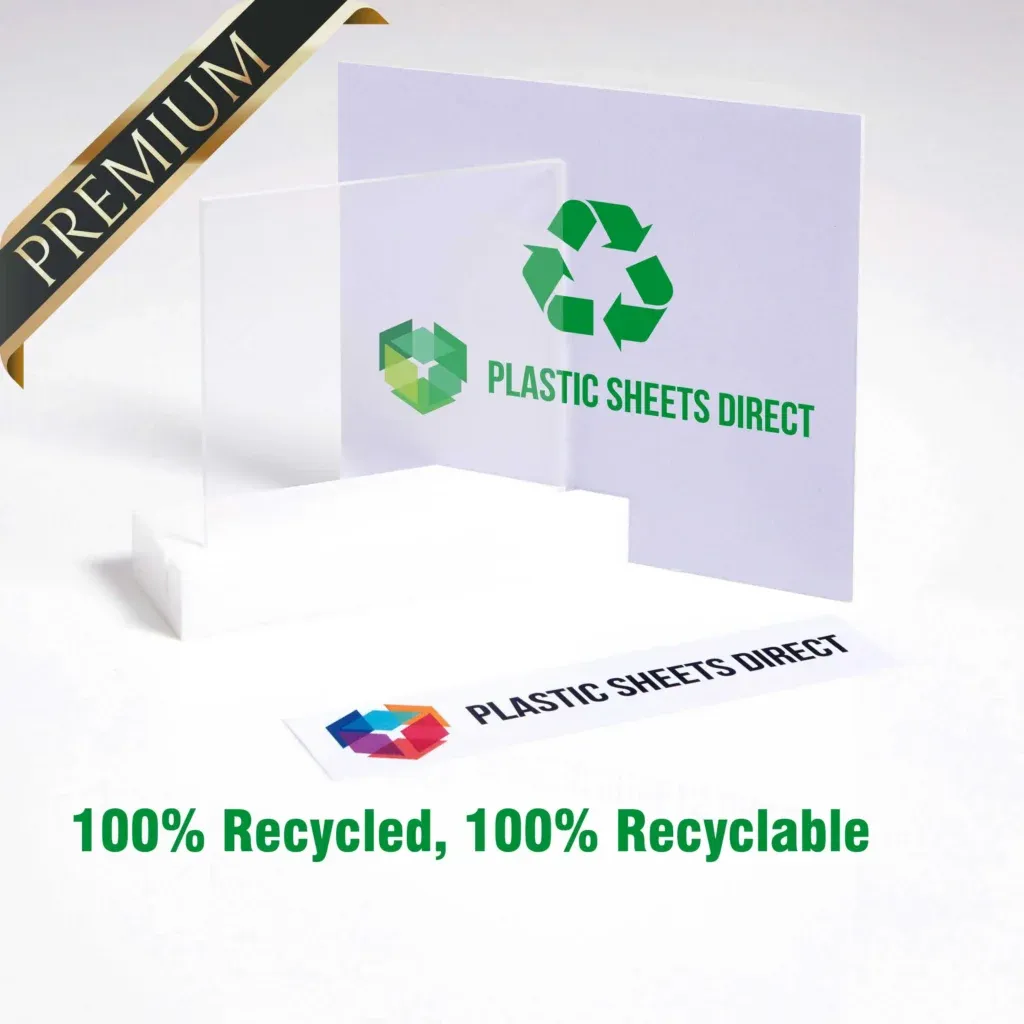
Conclusion
The journey toward sustainable acrylic sheet production is an environmental necessity. Also, it’s an economic and strategic advantage for industries looking to stay ahead in an evolving global landscape.
Eco-friendly acrylic manufacturing reduces carbon emissions, minimizes waste, optimizes energy use, and enhances brand reputation. It creates a win-win scenario for the planet and those few brands.
Make Your Step Toward Eco-Friendly Acrylic with JUMEI
Jumei Acrylic continues to improve its innovation and technology regarding sustainable development. Clients don’t have to concern themselves with excessive pricing, errors, or delays. Contact us to know how our expertise can aid your eco-conscious acrylic demands.

